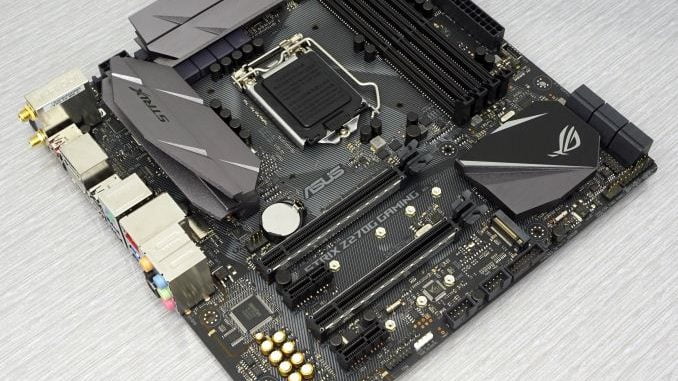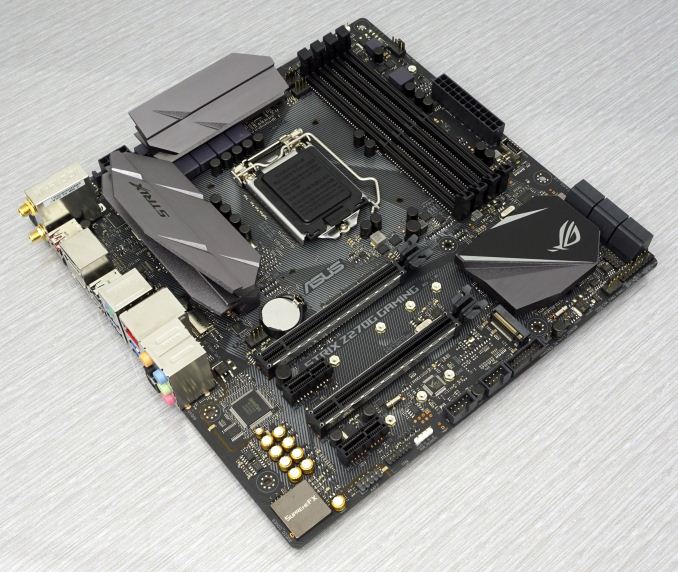
Visual Inspection
Board Features and Overclocking
Test Bed and Setup
BIOS
Software
System Performance
CPU Performance, Short Form
Gaming Performance
Asus ROG Strix Z270G Gaming Conclusion

Micro ATX motherboards mark the spot between the limiting Mini ITX motherboards that are limited to a single expansion slot and the classic ATX motherboards that often offer more than what the user requires. Many users need more than a single PCIe slot but not nearly as many as seven. In this review, we are having a look at the Asus ROG Strix Z270G Gaming, a Micro ATX motherboard based on the Intel Z270 chipset.
We have looked at both Mini ITX and ATX motherboards based on Intel’s Z270 in the past few months, but not yet a Micro ATX motherboard. Although their market share is relatively low, Micro ATX systems are a viable compromise between the very compact but limiting Mini ITX factor and a full-size ATX motherboard. The Asus ROG Strix Z270G Gaming is specifically designed to be the basis of a powerful SLI/Crossfire gaming system that will be a little bit more compact than that of a full-size ATX motherboard.
Asus ROG Strix Z270G Gaming Overview
A quick look at the Asus ROG Strix Z270G Gaming reveals that the Micro ATX motherboard is loaded with features that are directly comparable in quality and number to those of any ATX motherboard around its price range. As it is 59 mm shorter than an ATX motherboard, the Asus ROG Strix Z270G Gaming has three fewer expansion slots. The configuration that Asus went with is two full-length PCIe ×16 slots (×8/×8 in SLI/Crossfire) and two short PCIe ×1 slots. There are two PCIe ×4 M.2 slots and six SATA connectors, which ought to be enough for the storage requirements of any gaming or home entertainment system. There are no native U.2 connectors, but U.2 drives can be connected to the M.2 slots by using appropriate adapters. Asus does not add any SATA Express connectors on most of their gaming range motherboards and the ROG Strix Z270G Gaming is, expectedly, no exception to that rule.

The controllers of the ROG Strix Z270G Gaming motherboard are interesting, yet nothing out of the ordinary for a motherboard of this class. For audio, Asus is particularly proud about their “Supreme FX” audio system that implements the Realtek ALC S1220A (aka ALC1220A) audio CODEC and is placing a lot of their marketing efforts on it. The single wired Gigabit LAN chipset is the very popular Intel I219-V, with Asus expressively advertising the implementation of their surge protection feature called “LANGuard”. Asus has also added a WiFi/Bluetooth module from Qualcomm (Atheros QCNFA364A). Finally, there are two USB 3.1 controllers from ASMedia, one for the rear USB 3.1 Gen 2 ports (one Type-A and one Type-C) and one for the internal USB 3.1 Gen 2 header. At this point, we should also mention that the ROG Strix Z270G Gaming is the first Z270 motherboard that we have tested that has an internal USB 3.1 Gen 2 header
[“Source-timesofindia”]
